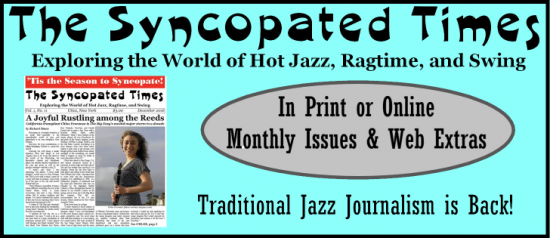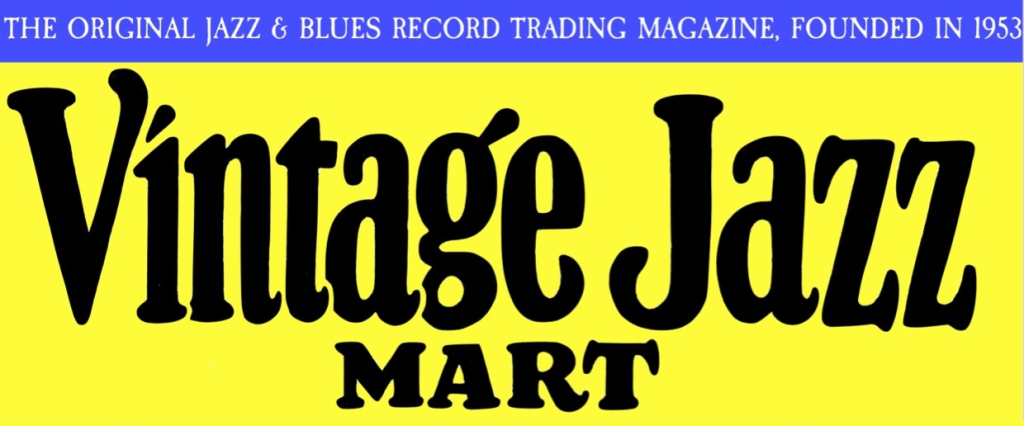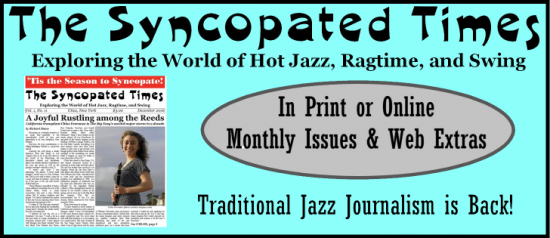It wouldn’t have been right to send Harriet Choice off to another — unreachable — neighborhood in a flurry of silence, for she loved words and sounds, community and musical friendships. Her friends and family (the two were often interchangeable) organized a free musical evening in her honor at the fabled Jazz Showcase in Chicago, “featuring many of the musicians Harriet loved and who returned the favor, including trombonist Russ Phillips, saxophonist Eric Schneider, guitarist Andy Brown, vibist Stu Katz, bassist Dan DeLorenzo, drummer Bob Rummage, and vocalist Petra Van Nuis.” Details here — but since not everyone knows how crucial Harriet was to jazz, and not just jazz in Chicago, I reprint the biographical sketch from the Jazz Showcase site:

“Chicago has always been a jazz town, but its oldest newspaper didn’t have a jazz critic until Harriet Choice. In 1968, when she began publishing her weekly column, “Jazz by Choice” in the Chicago Tribune, she also broke another barrier. At that time, you could count on one hand the number of women writing regularly on jazz — and none of them covered the music for a major daily.
Her weekly collage of interviews and reviews, followed by a curated listing of who was appearing in town that week, established the template for writing about jazz in Chicago, and for the next 13 years, her byline constituted a familiar guiding light for the city’s music followers.
Choice did more than write about jazz. A fierce advocate and activist for the music, in 1969 she joined with a handful of Chicago musicians, supporters, and fellow journalist Dan Morgenstern to create the Jazz Institute of Chicago. This not-for-profit organization, dedicated to promoting jazz in all its forms, got a major boost by programming the internationally renowned Chicago Jazz Festival — the first installment of which, in 1979, was assembled by the JIC’s founders on three weeks’ notice. In 1981, having gotten that taste of concert production, Choice produced the memorable “Goin’ To Chicago” concert at Carnegie Hall as part of the Newport Jazz Festival in New York, highlighting her hometown’s historical contributions and continuing importance on a national scale.
After she retired from column writing, Choice continued her long journalism career as a feature writer and executive travel editor for the Tribune, and later as an associate vice president at Universal Press Syndicate, where she oversaw the syndication of such authors as Elmore Leonard, William F. Buckley, Roger Ebert, and President Jimmy Carter, as well as the distribution of Boondocks, the groundbreaking (and controversial) African-American comic strip.
As a “founding mother” of the JIC, Choice continued her involvement over the years, eventually chairing the Institute’s Archive Committee, where she oversaw the recording of oral histories, thus preserving Chicago jazz history that might otherwise be lost. She personally conducted such interviews with, among others, trumpeter Bobby Lewis, multi-instrumentalist Ira Sullivan, and her fellow JIC founders, AACM visionary Muhal Richard Abrams and Delmark Records founder Bob Koester.
Harriet Choice’s love affair with jazz started in fandom, progressed to journalism, and moved from there into the kind of activism that supports and enriches the art form. Brilliant and opinionated, passionate and adventurous, she will be celebrated on November 28 by some of her favorite musicians and lifelong friends.“
(If I knew the author’s name, I would add it: such a portrait comes from deep admiring awareness.)
And some music — from a number of Harriet’s most regal friends and heroes who couldn’t make it to the Jazz Showcase:
May your happiness increase!






















